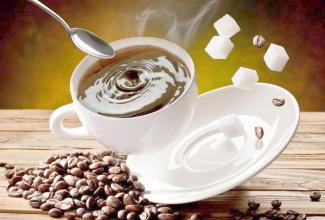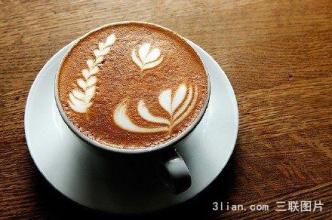At the scene of the annual shareholders' meeting: what is Starbucks' plan for the Chinese market?
Today's Seattle flags are flying, gongs and drums are ringing--the annual Starbucks shareholders 'meeting is held grandly! Shareholder representatives from the united states and around the world rejoiced, wept, and worshipped to hear how starbucks executives, led by chairman and CEO howard schultz, turned brown coffee into green dollars.
The above rumors can be ignored by everyone, but this shareholders 'meeting is really spectacular (below). According to the preliminary listening of the snack generation, Schultz has been introducing how to fight racial discrimination for a long time. No wonder they all say you want to elect the president.
Snack generation is not a political signal, let's get back to business. Schultz said 2014 was an extraordinary year. Starbucks had record revenues, profits and stock prices for the year.
Starbucks went public 23 years ago, he said, with 125 stores and a market capitalisation of $250 million. Today, the company has 22,000 stores in 66 countries, a market cap of $70 billion, and a 1200% increase in the company's stock price since 2008. Since listing, the company has split its shares 1:2 six times in a row (there is real applause here).
According to the message reiterated at the shareholders meeting, Starbucks will implement seven growth strategies. This includes becoming an employee choice, maintaining coffee leadership, expanding store portfolios, creating new opportunities for customer access, driving consumer packaged product growth, building the tea brand Teavana, and expanding digital engagement.
Next up is john culver, president of starbucks 'china and asia pacific business group and president of starbucks' global new sales channels and emerging brands group (it's really that long). Starbucks Coffee has reached 60 percent of the world's population by operating in and out of stores in China and Asia Pacific, he said. Over the next three years, Starbucks hopes to increase the number of stores worldwide from 22,000 to 30,000. This week, China and Asia Pacific will welcome its 5000th store.
Over the next five years, Starbucks will triple its stores in China and Asia Pacific, doubling the number of stores in 15 markets to 10,000.
More than half of Starbucks 'future global openings will come from China and Asia Pacific, driven mainly by Japan and China, he said. Japan was Starbucks 'first market outside North America, dating back to 1996 and now has nearly 1100 stores, and Starbucks will soon take full control of Starbucks Japan. China is Starbucks 'fastest-growing market, where Starbucks will open its 1600th store in the next few weeks and 3400 stores in the next five years, with Shanghai City already the world's largest Starbucks store.
In addition, he said he sees huge potential for on-site roast coffee in the international market and revealed that Starbucks is currently selecting suitable on-site roast locations in Japan and China.
Starbucks 'mission in channel development is to connect people globally and make Starbucks a place where they live, work and play, said Conway, president of global channel development. Starbucks products are sold in 39 countries. Only 20% of coffee consumption in the United States occurs in retail coffee shops, and the remaining 80% occurs outside coffee shops.
The fastest-growing segment of the home coffee market is single-cup products, with the main leader in the United States being K-Cups. After its launch in 2011, Starbucks has shipped 2.3 billion K-Cups. In Asia, Starbucks store sales have become a bright spot, he said, while the single-cup category has yet to take off.
"To this end, international expansion is an important part of our consumer packaged product strategy." Given that ready-to-drink coffee and energy drinks are currently valued at US$6 billion and will grow at a rate of 20 percent over the next three years, he said, he was pleased to announce today the signing of a strategic partnership agreement with Master Kong, one of China's largest beverage producers.
Since starbucks opened its first store, tea has been a part of the company's heritage, says anne young-scrivener, president of Teavana, a starbucks tea brand. Tea is now the most consumed beverage in the world after water, with a global value of $125 billion. Americans consume 800 million cups of tea each week, with iced tea the No. 1 drink consumed at noon.
"Our vision for Teavana is to transform and upgrade tea consumption worldwide." That's what Starbucks has done with coffee for more than 40 years, she said.
She noted that while Starbucks currently operates in 66 countries, Teavana is available in only seven. Asia consumes a lot of tea, and "Starbucks will be happy to bring innovation to tea to Asia while respecting the traditions here." She revealed that in 2016, all teas in Starbucks stores in China and Japan will be converted to Teavana.
Starbucks has built the world's "most successful" ecosystem in retail, with more than 14 million active users of Mobile device apps and nearly 8 million mobile payments per week, which is roughly 18 percent of Starbucks store transactions, showing the strength and momentum of the mobile ecosystem, said Adam Blottman, chief digital officer.

Important Notice :
前街咖啡 FrontStreet Coffee has moved to new addredd:
FrontStreet Coffee Address: 315,Donghua East Road,GuangZhou
Tel:020 38364473
- Prev

Not only coffee can be made into capsules, Nestl é also sells capsule milk powder in China.
In addition to developing a capsule coffee machine for drinking coffee, food giant Nestl é has also launched a baby capsule milk powder machine that makes it easy for parents to make milk powder. In March this year, the BabyNes intelligent nutrition system produced by Wyeth, a subsidiary of Nestl é, officially launched in China. According to Wyeth, this product includes a specially designed one-button intelligent punch conditioner in addition to milk powder.
- Next

Promised to use only local coffee beans but went back on Starbucks drew protests from Colombian growers.
In Colombia, Starbucks is facing protests from local coffee growers. In July 2014, Starbucks opened its first store in the Columbia region and promised to offer only Colombian coffee with its freshly brewed coffee products. But so far, Starbucks hasn't done that yet. The flagship store in Bogota, the capital of Colombia, not only supplies Colombian-made products.
Related
- Being chased out of the rain in front of Starbucks?! Store: Sheltering from rain under umbrellas poses a safety hazard
- The white moonlight has changed?! Lucky launches "Big Winter Pear American"
- Hand-brewed coffee three-stage method, high-sweet and universal brewing method to share! What does the high sweet water level of hand-brewed coffee mean?
- What is the difference between raw, refined and full espresso coffee? How to extract espresso and taste good?
- A complete list of coffee bean names and their meanings! What is Yejia Shefi coffee? Where is Mantelin coffee?
- What grade does Arida Manor Kaduai coffee beans belong to? What treatment is Arida ASD slow anaerobic sun exposure?
- The milk tea cup becomes smaller?! Overlord Tea Girl launches a new "Return to Yunnan" series
- Accused of selling counterfeit and high-priced coffee beans! Well-known boutique coffee brand "Oukelao" bowed and apologized!
- How to make espresso dumplings? Can I eat coffee and glutinous rice balls together?
- Save the unformed and stagnant powder cakes in one second! What is the problem with stagnant water in the powder bowl of the espresso machine?

